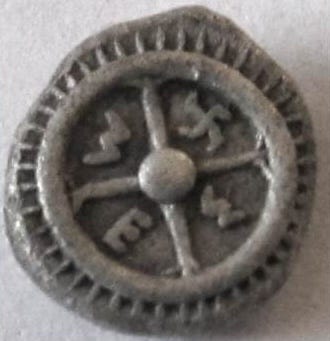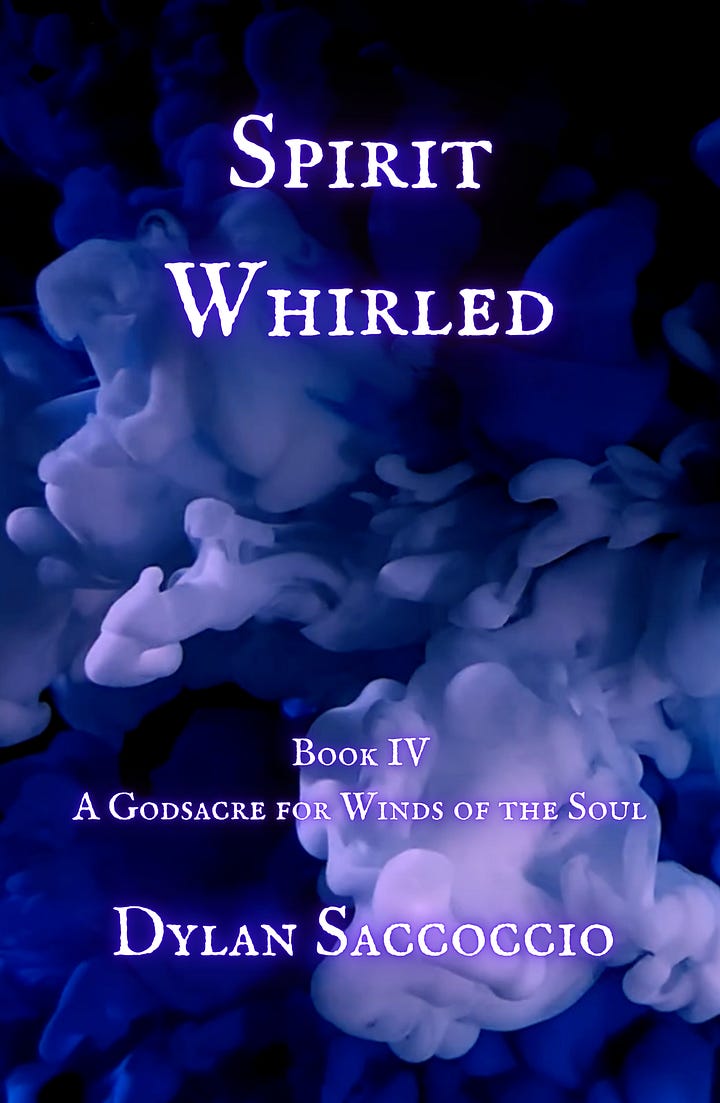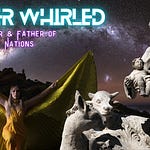Set a beggar on horseback and he'll ride to the Devil.
A beggar on horseback is a person unaccustomed to wealth or luxury, who will easily be corrupted by it. The word person is interchangeable with parson, a beneficed member of the clergy. A benefice a permanent Church appointment, typically that of a rector or vicar, for which property and income are provided in respect of pastoral duties. Benefice brings another layer of meaning to Pope Boniface, which will not be lost on those who’ve read Spirit Whirled: The Blackest of All Magick.
“What does not the Theophagist (God-flesh eater) owe to his spiritual pastor and master, who has dished him up such a bit of heavenly lamb, with such hellish sauce to it?” —Rev. Taylor
Mithra signifies a mediator, one who binds a covenant, contract, or oath. Wiki describes him as “an ancient Iranian deity of covenants, light, oath, justice, the sun, contracts, and friendship. In addition to being the divinity of contracts, Mithra is also a judicial figure, an all-seeing protector of Truth, and the guardian of cattle, the harvest, and the Waters.”
While many moderns have suggested that the judge emulates Saturn in his black robes, father time, Kronos, I suggest the earlier symbolism of this system hearkens back to the sun. In Hebrews 8:6, Moses is also described as a mediator, with the Greek word also having the root mes, or ΜΕΣ, which also signifies the midday sun, or noon.
For those who can’t read Greek, the inscription on the coin in the following image reads MES, signifying the Midday Sun, followed by the swastika, or gammadion as Europeans knew it, inside the solar cross dividing the year, Janus, or Jove (Job; Ιωβ). The island was called Mesembria, the City of the Midday Sun, the Greek version of which is ΜΕΣΕΜ-ΒΡΙΑΝΩΝ (Mesem-Brianon). Embria is philologically Umbria, the oldest civilization in Italy according to Pliny the Elder.

Christ's Eternal Priesthood (Epistle to the Hebrews 8)
“And the sum concerning the things spoken of [is]: we have such a chief priest, who did sit down at the right hand of the throne of the greatness in the heavens, of the holy places a servant, and of the true tabernacle, which the Lord did set up, and not man, for every chief priest to offer both gifts and sacrifices is appointed, whence [it is] necessary for this one to have also something that he may offer; for if, indeed, he were upon earth, he would not be a priest — (there being the priests who are offering according to the law, the gifts, who unto an example and shadow do serve of the heavenly things, as Moses hath been divinely warned, being about to construct the tabernacle, for ‘See (saith He) thou mayest make all things according to the pattern that was shewn to thee in the mount;’) — and now he hath obtained a more excellent service, how much also of a better covenant is he mediator, which on better promises hath been sanctioned, for if that first were faultless, a place would not have been sought for a second.”
The name mse, or משה, pronounced moh-shay, was a term for an initiate in Egypt. This is the word for Moses, with a slight variation of it being the term for messiah, which looks like msih, or משיח, pronounced maw-shee-akh. In Exodus 39:22, the Lord commanded Moses, “And he maketh the upper robe of the ephod, work of a weaver, completely of blue.”
This is important because the founder of Mexico is Mexi, but keep in mind that the X functioned like S, so Mexico was Mesico, and Mexi was Mesi. The modern pronunciations in both Spanish and English do not correspond to the way the early Spaniards recorded these discoveries. Mesi, or Mexi, whose name is philologically identical to Moses, is depicted as being blue.
Mesites, from Mesos, is an arbitrator, a mediator, in Greek. This is what Moses, Mithras, and Mesi are; they represent the sun, the mediator between us and God, its covenant being the year, the seasons, the day and night, etc. The summer months, or seven Asiatic churches, are known as the covenant of works. The winter months, or the five months of suffering, the stigmata, form the covenant of grace. These cycles of time are only reckoned by the sun, hence MES signifying the sun at noon in the city of the midday sun: Mesembria.
Rev. Taylor touched upon the Mexican situation that I addressed in Spirit Whirled: Terminalia. He wrote (Astr. Lect. pp. 123, 124.), “It will not be pretended, I hope, that the inhabitants of Mexico, who, before their invasion by the Spaniards, Pizarro and Cortes, had not heard of the existence of either Jew or Christian, could have borrowed their theology from our Hebrew Pentateuch. Yet is their Mexi, the founder of their race, the perfect counterpart of the Hebrew Moses; and their Supreme God the adorable Vitziputzli (Hitzilopochtli), the fascimile of Jehovah.”
The Hebrews, the men from beyond, or those who’ve passed over the Hebraic degrees of initiation in the masonic priesthood, had to possess the knowledge of astronomy in order to build temples based on these cycles. Taylor added (Ib. p. 126), “And thus we have a blue curtain (sky), hung upon four pillars (seasons), overlaid with gold (light of the sun), and presenting the figures of cherubim of cunning work (cosmic cycles), according to the pattern of things in the heavens (asterisms and layout of the stars).
“And are we to be so stone blind; are we so to renounce all faculties of reason which constitute our rational nature, as to oblige our preachers of the gospel, by not discovering that this blue curtain, with cherubim upon it, was and could have been nothing else than an astronomical eidouranion, an Orrery, or picture exhibiting the relation of the heavenly bodies, precisely of the same nature as Walker’s Orrery, which you may see every year, and any where, where astronomical lectures are given, with the advantage of a suitable astronomical apparatus?

“And here have we the reasons and properties of that prevalence of the blue color, the color of the canopy of Heaven, and scarlet, and gold, the color, of the planets, and constellations, enwrought, embossed, and set upon that blue, not only in the veil of the Holy of Holies, and in all the furniture of the tabernacle, but in the dresses of the priests, ‘who ministered in holy things, and served unto the likeness of things in Heaven.’ That is, the priests dressed themselves up in the imaginary characters of the constellations and planets,—and one personated the planet Mercury, another Jupiter, another the Sun or the Moon, others the twelve signs of the Zodiac, others the constellations without the Zodiac; exhibiting in their dresses, by the golden spangles set upon a blue ground, the exact position of the Stars in the constellations, which each in his particular function severely represented.”
Recall the word hypocrite originally signifying an actor, which was a function of the priesthood that performed tragedies, and suddenly Matthew 16 makes much more sense, “Hypocrites, the face of the heavens indeed ye do know to discern, but the signs of the times ye are not able!”
Rev. Taylor could not have articulated the following better:
A book which represents God as a tyrant, is a book only fit for slaves.
A book which represents him as a liar, is a lying book.
A book which requires more explanation than it has ever yet had to explain away these representations, had better be done away with, and done with for ever.
To which he added (Ib. p. 149.), “And it would be so, Sirs! it would be—but for the secret of it,—that ‘tis by this wicked craft, and by the very wickedness of it, that bishops, priests, and preachers, have their wealth, and roll in saucy pomp, over the crushed necks of the mentally degraded, and therefore politically oppressed people. Never will tyrants and oppressors be got rid of, till Bibles be got rid of. Μεγα βιβλιον, μεγα κακον is the proverb, the great book is the great evil. (Transliteration: Mega vivlion, mega kakon.) Had the pretended revelation of God been worthy of a God, it would never have been done. Had its simple, but holy purport been, ‘All mankind are brethren, all are alike the children of one common nature: let them make themselves happy—that is wisdom: let them labor to promote the happiness of others—that, that alone, is virtue’:—The tale would’ve been told too soon,—there would have been nothing in it by which one man could overreach the understanding of another. There would have been no lies to be made to look like truth, no injustice to be made to appear just, no impossibilities made to appear possible; no Hell, no Devil, no raw head and bloody bones, that wouldn’t stay dead when he was dead; no damnation, and so no clergy.”
I take an interest in these subjects, not because I care about the spiritual philosophy they contain, but because these systems, if authentic, indicate worldwide cultural diffusion predating the Middle Ages and possibly long before the reckoning of the Common Era. I do my best to demonstrate this in the Spirit Whirled series and The Real Universal Empire, while acknowledging we are barely at the beginning of this discovery because those who’ve touched upon it, or tried to put the pieces of the proverbial puzzle together in the past, didn’t have all of the details necessary. We still don’t, but I have advanced this research further by highlighting that the Basque culture uses Etruscan words, while pretending to be a unique culture of unknown origin. I also do my best to show the cultures referred to as the Pelasgians and Phoenicians were also from Etruria. The Basque people using an Etruscan word for father is evidence of an Italian origin and diaspora, not an oriental one. Etruscan reads from right to left like Hebrew.
Also note that aita (eye-tuh) signifies priest, as well as author, which is a creator or maker.
I was guided to this discovery while delving into the research of Col. Charles Vallancey, who demonstrated that the Irish language has incredible affinity to Punic (Sicilian Phoenician), which I use to confirm that Punic is a derivative of the ancient Italian languages, and those people were Celtic, as anyone who possesses vision can confirm by examining the phenotype of the Don (Lord) of my Etruscan family. For those interested in these subjects, invest in yourself and go through my work.







Become a member to access the full podcast and show notes as we continue with the coverage of the Wilderness.
Listen to this episode with a 7-day free trial
Subscribe to Ancient History, Mythology, & Epic Fantasy to listen to this post and get 7 days of free access to the full post archives.



















